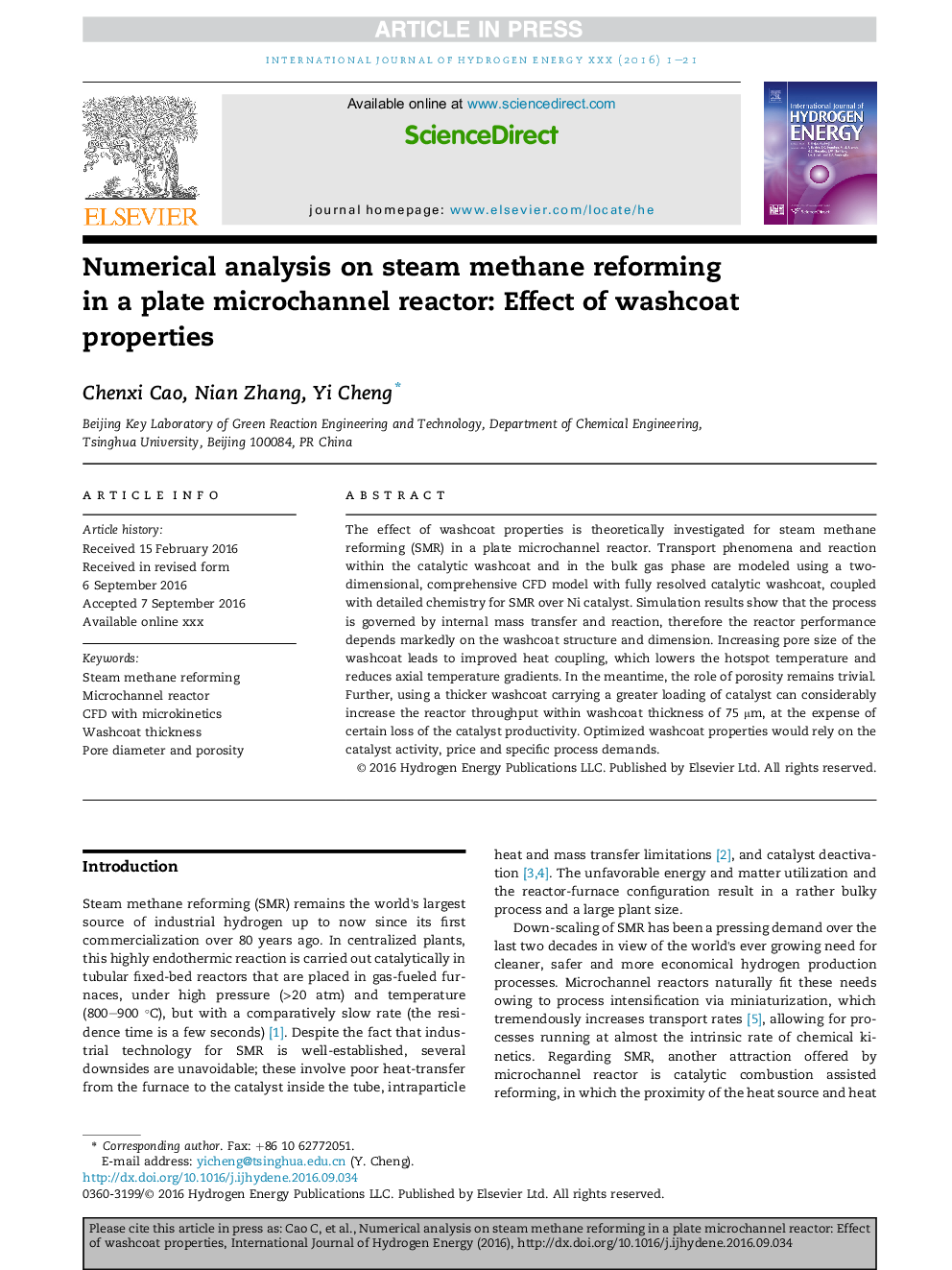| Article ID | Journal | Published Year | Pages | File Type |
|---|---|---|---|---|
| 5147148 | International Journal of Hydrogen Energy | 2016 | 21 Pages |
Abstract
The effect of washcoat properties is theoretically investigated for steam methane reforming (SMR) in a plate microchannel reactor. Transport phenomena and reaction within the catalytic washcoat and in the bulk gas phase are modeled using a two-dimensional, comprehensive CFD model with fully resolved catalytic washcoat, coupled with detailed chemistry for SMR over Ni catalyst. Simulation results show that the process is governed by internal mass transfer and reaction, therefore the reactor performance depends markedly on the washcoat structure and dimension. Increasing pore size of the washcoat leads to improved heat coupling, which lowers the hotspot temperature and reduces axial temperature gradients. In the meantime, the role of porosity remains trivial. Further, using a thicker washcoat carrying a greater loading of catalyst can considerably increase the reactor throughput within washcoat thickness of 75 μm, at the expense of certain loss of the catalyst productivity. Optimized washcoat properties would rely on the catalyst activity, price and specific process demands.
Related Topics
Physical Sciences and Engineering
Chemistry
Electrochemistry
Authors
Chenxi Cao, Nian Zhang, Yi Cheng,
